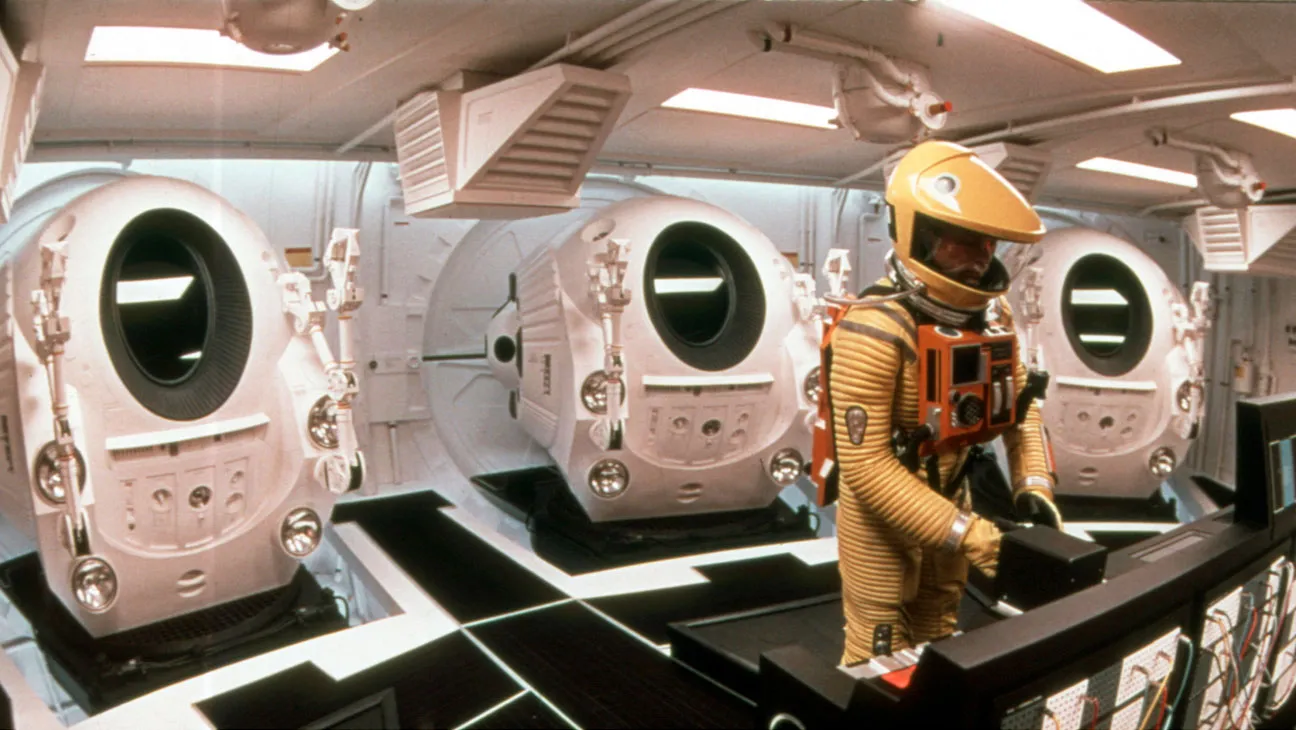There are films, and then there is 2001: A Space Odyssey—a film so vast, so cerebral, and so completely untethered from traditional storytelling that one wonders whether it was crafted by human hands or materialized from the depths of an advanced alien consciousness. Stanley Kubrick, ever the meticulous mad genius, delivers a sci-fi epic that is less a movie and more an experience—an odyssey not just through space, but through the very fabric of existence itself.
Plot, in the traditional sense, is something 2001 treats with an almost aristocratic disdain. Instead, we are given four acts, loosely connected by the cosmic throughline of a monolithic mystery. We begin with prehistoric hominids, who discover a strange, black monolith and promptly invent murder (progress!). Fast forward a few million years, and humanity has reached the stars—only to encounter yet another monolith on the Moon, emitting a signal toward Jupiter. Enter Dr. Dave Bowman and the crew of Discovery One, who are sent to investigate, accompanied by the film’s most fascinating character, the eerily calm, quietly murderous AI, HAL 9000.
Visually, the film is nothing short of staggering. Even today, 2001 makes modern CGI-heavy blockbusters look like hastily assembled PowerPoint presentations. The space station ballet, set to Strauss’ The Blue Danube, is pure cinematic poetry. Kubrick doesn’t just depict space travel—he makes us feel the weightlessness, the eerie silence, the sheer isolation of the void. Every frame is composed with the precision of a Renaissance painting, and Douglas Trumbull’s groundbreaking special effects ensure that, more than 50 years later, the film remains the gold standard for visual realism in science fiction.
And then, of course, there’s HAL 9000, cinema’s most chillingly polite antagonist. Voiced by Douglas Rain with the unsettling calm of an emotionless bureaucrat, HAL is a marvel of minimalism—an omnipresent red eye and a soft, soothing voice masking an intelligence as cold as the vacuum of space. His slow descent into homicidal paranoia is more unnerving than any snarling monster Hollywood could conjure. The tension in the sequence where HAL methodically eliminates the crew is as suffocating as space itself.
Then we arrive at that final act—the Star Gate sequence, where Kubrick throws narrative structure out the nearest airlock and plunges us headfirst into a vortex of cosmic psychedelia. Dave Bowman, hurtling toward the unknown, is subjected to an explosion of color, light, and utterly inexplicable visuals that seem tailor-made to fry the minds of 1968’s most enthusiastic hallucinogen users. He eventually arrives in a surreal neoclassical room, transforms into a cosmic fetus (as one does), and ascends to a state of godhood, or rebirth, or… something. Kubrick, ever the cryptic mastermind, offers no answers, leaving us to ponder, interpret, and argue about the film’s meaning until the end of time.
Would I recommend 2001: A Space Odyssey? With every fiber of my snooty, cinephilic being. It is not a film for the impatient, nor for those who require traditional dialogue and character arcs. It is a film for those willing to surrender to cinema in its purest, most ambitious form. It is slow, meditative, and at times impenetrable, but it is also one of the most awe-inspiring achievements in film history.
Rating: 5 monocles out of 5
For its revolutionary visuals, haunting atmosphere, and sheer audacity. A masterpiece that transcends cinema itself—provided you have the patience to let it unfold before you.

